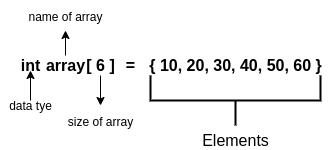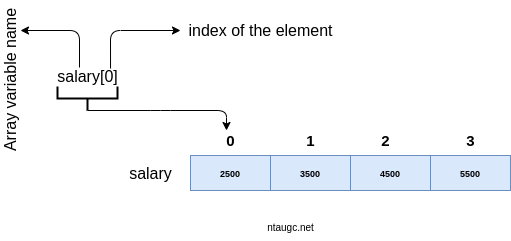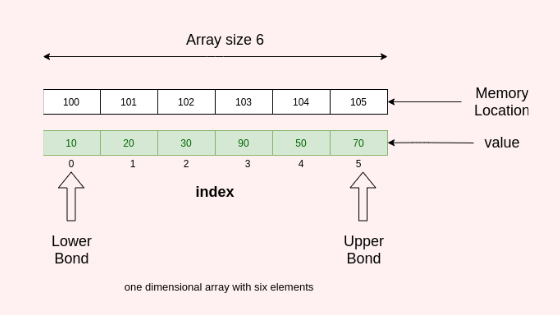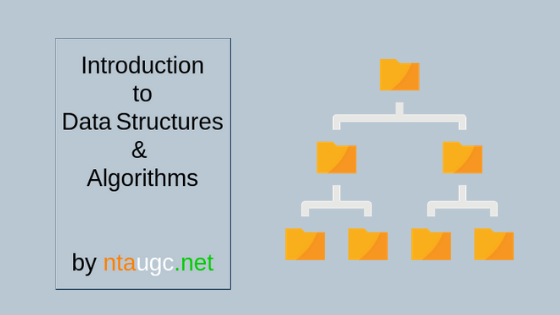Array
What is an Array?
An array is a collection of similar data types that store items in contiguous memory locations. It is also known as the Subscripted variable.
Arrays are very powerful data structures that store lists of elements
Arrays are classified as Homogeneous Data Structures because they store elements of the same type. They can store numbers, strings, boolean values (true and false), characters, objects, and so on.
But once you define the type of values that your array will store, all its elements must be of that same type. You can’t mix different types of data.
For example, an int data type array stores int type elements while a char array contains char type elements. Following are the important terminology to understand the concept of Array.
Index − Each element is stored in a specific numerical location this is known as index.
- Element – Each item stored in an array or subscripted variable is known as an element.
zero-based indexing − The first element is indexed by the subscript of 0
one-based indexing − The first element is indexed by the subscript of 1
- subscript – index number is also known as a subscript.
Why we need an Array
Suppose you want to store the salaries of 300 employees in ascending order. In such cases, we have two options for storing these salaries. One is an individual variable other is array or Subscripted variable.
- Construct 300 variables to store the salaries of 300 employees, that is, each variable will contain the salary of one employee.
- Construct a variable capable of storing or holding all three hundred values.
Of course, the second alternative is better. A simple reason for this is, it would be much easier to handle one variable than handling 300 different variables.
Array Initialization and Representation
In this section, we know The statement used to declear an array is.
Initialization

Representation

As per the above example, the following important points have to be considered.
- Index starts with 0 which is known as a lower bond.
- Last element index is known as upper bond
- Its length is six which means it can store 6 elements.
- Each element can be accessed via its index as shown below.

Basic Operations
Following are the basic operations which is supported.
Traverse − print all the elements one by one.
Insertion − In the given index, adds an element.
Deletion − Deletes an item in the indicated index.
Search – Searches for an element using the index given or by the value.
Update − In the given index, updates an element.
Defaults values
| Data Type | Default Value |
|---|---|
| int | 0 |
| char | 0 |
| float | 0.0 |
| bool | false |
| void | |
| double | 0.0f |
In the case of a single-dimension Subscripted variable
total bytes = sizeof(base type) X size of array
For a two-dimensional Subscripted variable
total bytes = size of 1st index X size of 2nd index X sizeof(base type)
Time complexity of various tasks or operation
| Operation | Average Case | Worst Case |
|---|---|---|
| Read | O(1) | O(1) |
| Insert | O(n) | O(n) |
| Delete | O(n) | O(n) |
| Search | O(n) | O(n) |
Advantages
- subscripted variable allows random access of elements.
- Subscripted variable has better cache locality so iterating the arrays using their index is faster compared to any others.
- It is multidimensional. 2D represents the matrix.
- An array is quite simple to implement other than data structures.
Disadvantages
- Once the array is declared, we cannot change the size.
- Time complexity increase in insertion and deletion operation because insertion and deletion are quite difficult in the subscripted variable.
- some time wastage of memory because the subscripted variable is fixed in size.
Remarkable things about Subscripted variable
A one-dimensional (1-D) Subscripted variable is called a vector.
A two-dimensional (2-D) is called a matrix.













